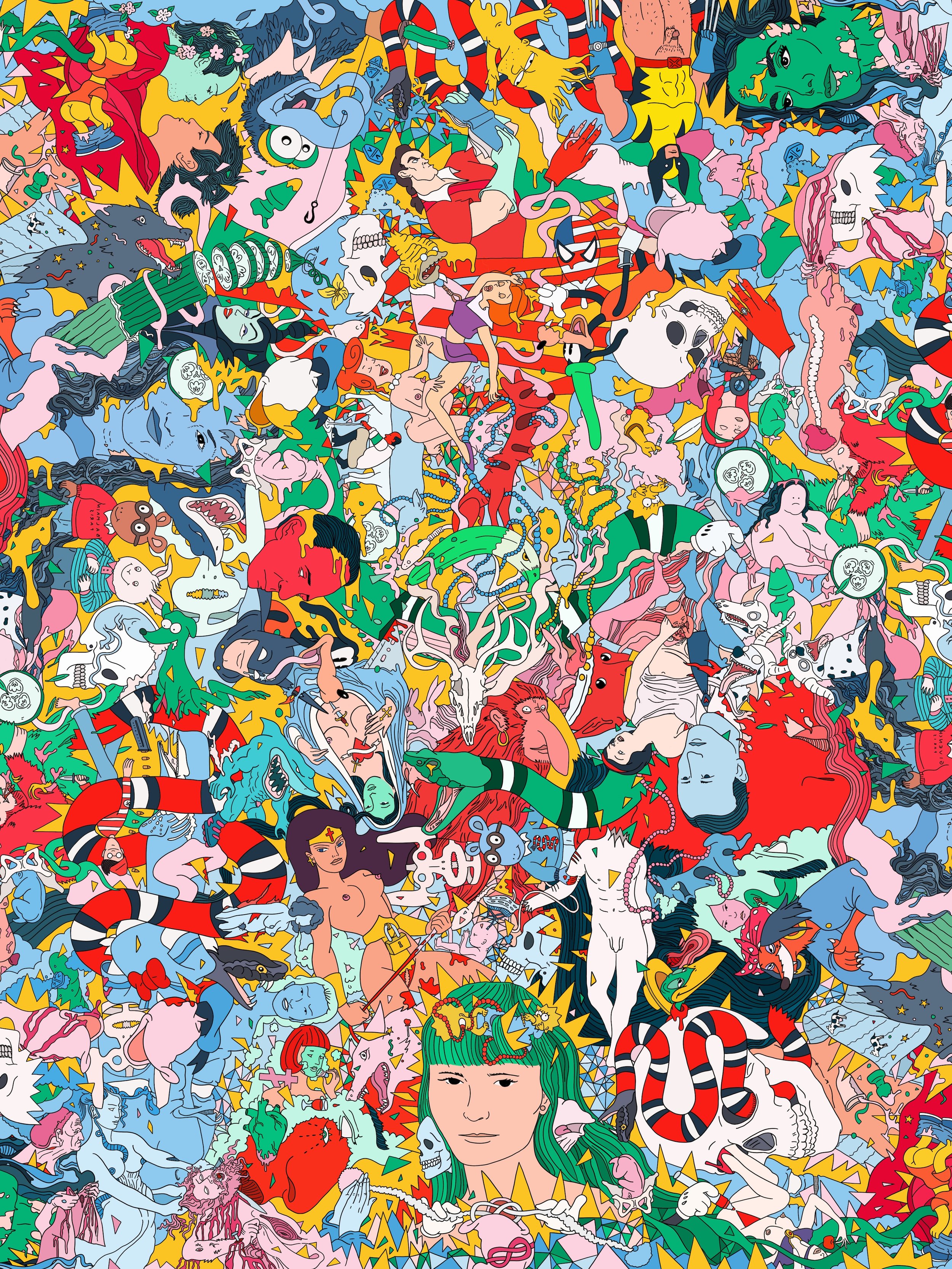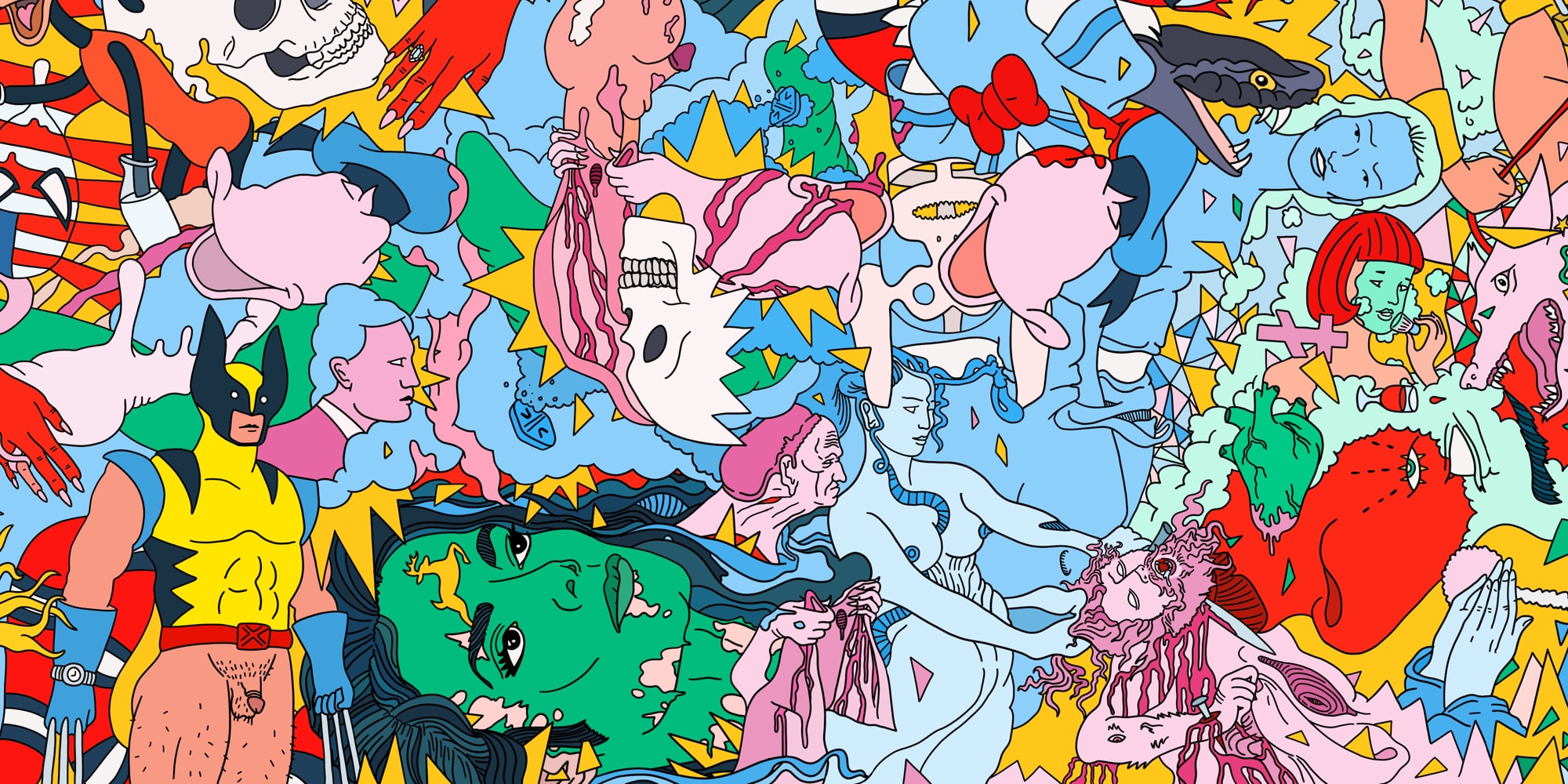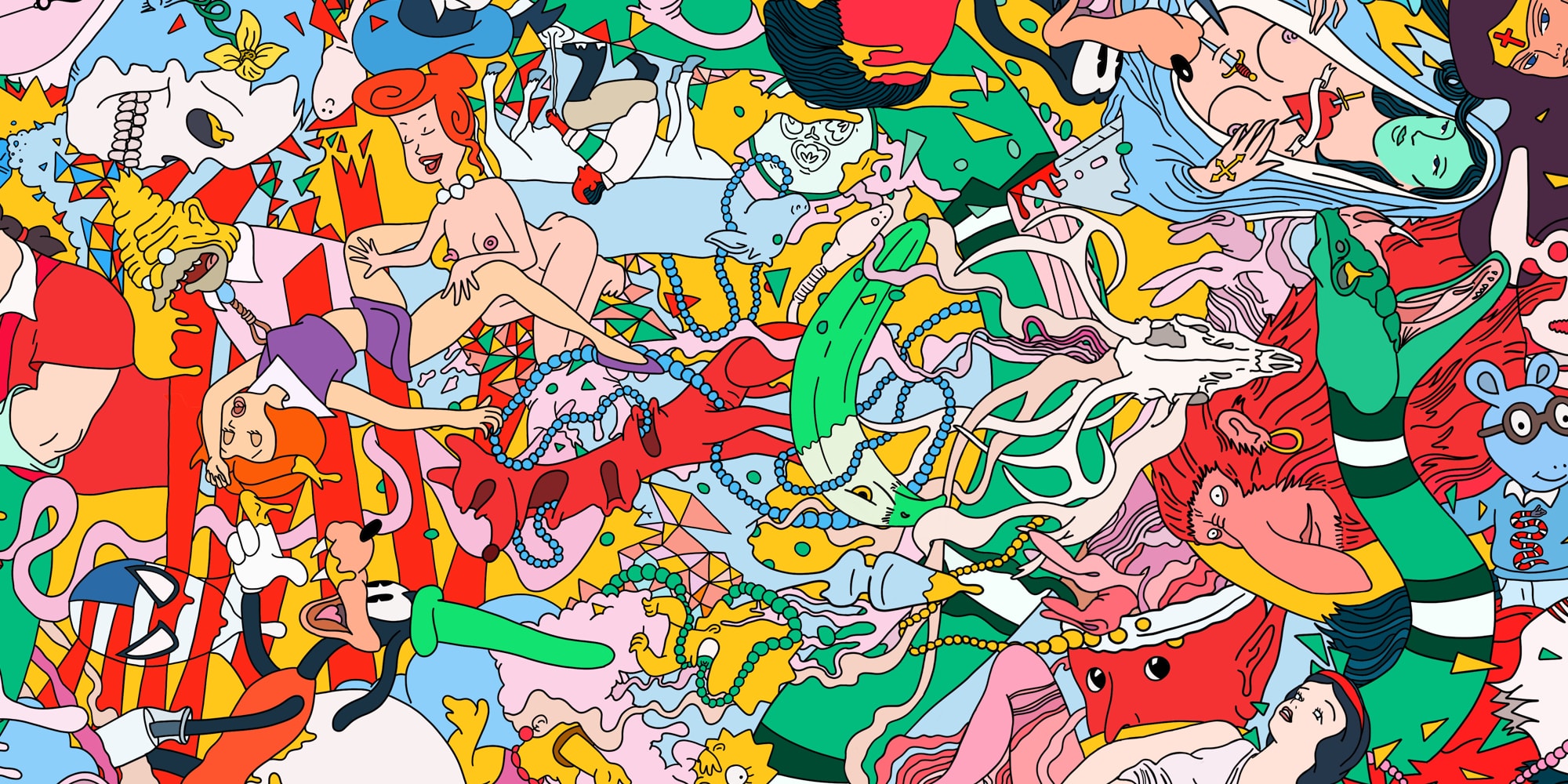Magic Mirror - Wallpaper
Magic Mirror is a digital illustration that positions familiar pop-culture references within a collage of crowded symbolism. The commonplace characters, cartoon color scheme, and dense composition are used to capture the viewer’s attention and draw focus to the illustration’s more subtle themes.
The collage is structurally similar to an abstract painting. Perspective and direction are non-existent. Instead, a sense of depth is achieved through layering. The colorful shapes of the drawing are bounded by black lines that curve, merge and overlap to create a surreal arrangement of space.
Viewing the full collage is like staring into an optical illusion. Backgrounds and foregrounds blend seamlessly. Shadow and perspective are non-existent.
While the work is visually interesting, because it has no clear focal point, it's also hard to look at. The result of this arrangement is that the viewers gaze is subconsciously drawn to the forms and faces that resonate with their own personal experiences.
The characteristic of "forced focus" follows from the illustration's primary symbolic device: the object of the mirror. The mirror is a flat, static object with no innate power or significance, and yet when encountered pulls our eyes toward it like a magnet.
In addition to providing a structural influence, the mirror also serves as a foundation for understanding the core theme of the work, which is the challenge of affirming a self-defined identity.
While there are no actual mirrors in the drawing, the numerous references to costumes and make-up keep questions of physical projection top of mind. Peeling skin and half-baked disguises point to the transience of physical identity, and the challenging dynamics involved in ‘seeing’ and ‘being seen.’
By wearing a costume, the characters depicted in the collage validate the mechanisms of external confirmation that makes the costumes necessary. In this way, the presence of a mask reflects the importance of the mirror.
The content of the drawing works to communicate this concept on a literal and figurative level, weaving together references to physical reflection with more broad allusions to reflected social identity.
Looking at Disney’s animated version of Snow White - a work which is referenced and throughout the collage - the physical mirror in the story serves as a useful device for communicating the risks of relying on external confirmation to determine a sense of self-worth. However, on a higher level, the entire film can also be seen as a mirror, reflecting the realities of the society in which it was made.
Just like the mirror on the wall, the social mirror reflected in popular media like Snow White holds incredible power to shape a viewer’s sense of identity. In the same way that a physical mirror can constrain the viewer’s ability to feel young or attractive, the freedom to define a psychological identity as normal and wanted, is challenged by the reflected realities within popular social narratives.
The content and symbols within ‘Magic Mirror’ aim to highlight the tensions between the internal and external sense of self, exploring not only the confines of physicality but also similar questions of personal identity.





